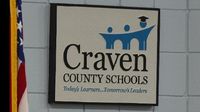North Carolina’s public schools have reached a milestone, achieving their highest-ever four-year graduation rate and marking significant progress in student test scores, even as challenges linger in reading proficiency and funding. The latest data, presented on September 3, 2025, to the State Board of Education by the North Carolina Department of Public Instruction (DPI), paints a nuanced but hopeful picture of recovery and growth across the state’s education system.
For the 2024-25 school year, the state’s four-year graduation rate rose to 87.7%, the highest in at least two decades and the third consecutive annual increase. According to DPI’s senior director of accountability and testing, Tammy Howard, “We’re very excited, of course, today to recognize the highest four-year cohort graduation rate for North Carolina at 87.7%. This is a consistent increase for the past three years, but most notable, the highest ever.” Superintendent of Public Instruction Mo Green echoed the significance of the achievement, stating, “These results represent more than just numbers. They represent thousands of students better prepared for their next phase in life.”
Alongside the graduation milestone, students posted a three-year high on most standardized tests. The report showed improvements in 12 of 15 reading and math exams, including gains on every end-of-grade math test for grades three through eight. Statewide proficiency in third- through eighth-grade math climbed to 56.7%, nearly matching the 56.1% rate from six years ago, before the COVID-19 pandemic disrupted education across the country. In reading, however, the overall proficiency rate was 52.5%, still trailing the 57.3% recorded six years prior. As Howard explained, “Reading is more difficult and takes more time. Our teachers have been trained, but we just need to align some of the other supports to really accelerate that progress.”
The data also revealed steady progress across all racial and ethnic groups, with the strongest performance in three years. Notably, Nash Early College High School stood out, earning an overall A rating and exceeding academic growth targets for the sixth consecutive year. The school’s students achieved proficiency rates of 83% in biology, 89% in math, and an impressive 96% in English. Principal Thomas B. McGeachy attributed the success to a culture of teamwork and risk-taking, saying, “I’ve tried to create an environment where I encourage staff and scholars to take risks. Don’t be afraid of failure, because if you didn’t achieve what you wanted to that means you reflect on the experience and you build upon it.”
For students like Frederick Lindsay, a 13th-grader at Nash Early College, the school’s dual enrollment program with Nash Community College opened doors to unique opportunities. “Since we’re linked with Nash Community College, we have a wide variety of opportunities,” Lindsay said. “I got to experience a new country for the first time for $500 to stay there for five days. That’s an opportunity that you wouldn’t get many places.”
Craven County Schools also reported encouraging results, with ten schools exceeding growth expectations during the 2024-25 school year. Rick Stout, the district’s interim superintendent, expressed pride in the progress: “We are encouraged by the progress many of our schools are making and proud of the commitment of our students, educators, and families. At the same time, we know there is more work ahead, and we remain committed to continuous growth and academic excellence across all of Craven County Schools.”
Despite these bright spots, challenges persist. Reading proficiency, particularly in the early grades, remains below pre-pandemic levels. While third- through eighth-grade math scores have nearly recovered, reading lags behind. The state has responded by training teachers in new, research-backed reading instruction methods, though implementation is still in its early stages. As Howard noted, “The structure is there for support, but we just need to align some of the other supports to really accelerate that progress. But reading takes a lot of time and a lot of training, and we’ve done the training, and now we want to align some of the other supports.”
Science proficiency rates also present a mixed picture. Fifth-grade science proficiency stood at 62%, eighth-grade science at 60%, and biology at 53.4%. High schoolers taking Math 3 saw a dramatic rebound, with proficiency jumping to 66.4% in spring 2025, up from a steep dip to 34.1% in 2024 (when the test was not administered). English II proficiency remained steady at about 59.4%, nearly matching the rate from six years ago.
Superintendent Green has set ambitious goals for the future: a 92% four-year graduation rate and an average ACT score of 20 by 2030. The state’s composite ACT score rose slightly to 18.2 in spring 2025 from 18.1 the previous year, with North Carolina remaining one of the few states to require all students to take the ACT. Green’s new strategic plan, Achieving Educational Excellence, aims to build on these gains and make North Carolina’s public schools the best in the nation.
Yet, the path forward is not without obstacles. North Carolina ranks 48th nationally in per-pupil spending, investing nearly $5,000 less per student than the national average. Green and other education leaders argue that this funding gap makes it harder to attract and retain top teachers and to provide the full spectrum of resources students need. “Given the return on investment that has occurred here... what if we’d continued to receive that funding?” Green asked, referencing the more than $6 billion in federal COVID-19 relief dollars that supported learning recovery efforts from 2021 to 2024. The 2024-25 school year was the first without those federal funds, forcing schools to cut or reassign many staff positions dedicated to tutoring and intervention.
Natural disasters have added another layer of complexity. Hurricane Helene caused significant lost instructional days in several western school districts during the 2024-25 school year, leading to exemptions from state accountability programs for many affected districts. Some families relocated, further disrupting student enrollment and stability.
The state is also leveraging targeted grants to address persistent gaps. A $25 million grant from the Golden LEAF Foundation is funding math instruction improvements in 15 high-needs rural middle schools, with the hope that successful strategies can be scaled statewide. State officials are optimistic that these investments, combined with ongoing teacher training and new instructional methods, will yield continued progress—especially in reading, where results are expected to improve as more students experience the updated curriculum from the earliest grades.
As North Carolina’s public schools chart their course toward 2030, the latest results offer both a reason to celebrate and a reminder of the work that lies ahead. The state’s educators, students, and leaders are embracing the challenge, determined to ensure that every child has the opportunity to succeed—one milestone at a time.




